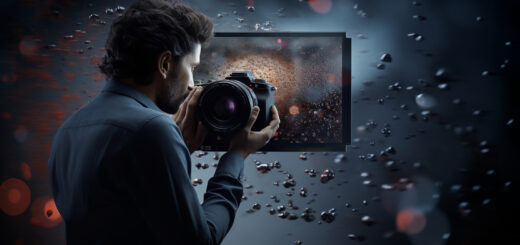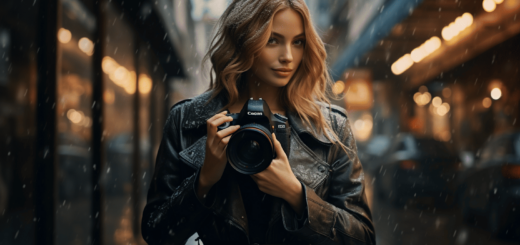Master Machine Learning Photography: Techniques and Tips
Machine learning has become an integral part of various fields, including photography. It allows photographers to enhance their skills, make better editing decisions, and create stunning images. In this article, we will explore the techniques and tips to master machine learning photography, helping you achieve exceptional results with your photos.
Table of Contents
- Introduction to Machine Learning in Photography
- Machine Learning Editing Tools
- Machine Learning Techniques in Photography
- Tips to Master Machine Learning Photography
- The Future of Machine Learning Photography
- Frequently Asked Questions
Introduction to Machine Learning in Photography
Machine learning is a subset of artificial intelligence that trains computers to learn by using algorithms, and it can now play a significant role in photography. From editing tools to new shooting techniques, machine learning allows photographers to improve their craft and create more captivating images.
Benefits of Machine Learning in Photography
- Speed: Machine learning can analyze thousands of images in seconds, helping photographers quickly identify the best shots and make necessary adjustments.
- Consistency: A photographer’s style can be maintained across a series of images with the help of machine learning algorithms, even when editing multiple photos.
- Accuracy: Machine learning algorithms can identify specific elements in photographs and apply precise editing, resulting in improved image quality.
Machine Learning Editing Tools
There are numerous editing tools available that harness the power of machine learning to enhance photographers’ workflows. Some popular options include:
Adobe Photoshop
Adobe Photoshop, a widely used photo editing software, now offers machine learning features that allow photographers to make complex edits with ease. Some key features include content-aware fill, automatic colorization, and intelligent upsampling.
Luminar AI
Luminar AI is a photo editing tool that uses artificial intelligence to provide enhanced editing capabilities. With its AI-powered tools, photographers can quickly make adjustments to skies, enhance facial features, and create realistic reflections on water surfaces.
Topaz Labs
Topaz Labs offers a suite of machine learning-powered plugins for image enhancement, noise reduction, and detail extraction. These plugins can be integrated into existing workflows with popular software like Adobe Photoshop and Lightroom.
Machine Learning Techniques in Photography
Machine learning can be applied to various aspects of photography. Here are some key techniques:
Image Classification and Tagging
Machine learning algorithms can automatically tag and classify images based on their content, making it easier for photographers to organize and search for photos in their collections.
Style Transfer
Style transfer is a technique that applies the visual features of one image to another using neural networks. This enables photographers to recreate the look of classic paintings or other artistic styles within their photographs.
Generative Adversarial Networks (GANs)
GANs are a type of machine learning model that can generate new images by combining aspects of existing ones. This can be used to create unique, visually appealing images for artistic purposes or even to remove unwanted elements from a photograph.
Tips to Master Machine Learning Photography
To make the most out of machine learning in photography, consider these tips:
- Understand the basics of machine learning: Familiarize yourself with the underlying concepts of machine learning and how it applies to photography.
- Choose the right tools: Research and experiment with different machine learning editing tools to find the one that best suits your needs.
- Practice: Like any skill, mastering machine learning in photography takes time and practice. Make a habit of applying these techniques to your work regularly.
- Stay updated: Keep up with the latest advancements and trends in machine learning and photography to stay ahead of the curve.
- Experiment: Don’t be afraid to try new techniques and explore the creative possibilities that machine learning can offer within your photography.
The Future of Machine Learning Photography
As technology continues to advance, it is likely that machine learning will play an even more significant role in photography. In the future, we can expect:
- Improved automation in image processing, allowing photographers to spend more time shooting and less time editing.
- More accurate image recognition and enhancement for specific subjects, such as landscapes, portraits, and wildlife.
- Advanced algorithms that can not only analyze but predict the optimal settings and adjustments for various shooting situations.
Frequently Asked Questions
-
What is the difference between AI, machine learning, and deep learning in photography?
Artificial intelligence (AI) is the broader concept that involves computers performing tasks requiring human intelligence. Machine learning is a subset of AI, focusing on using algorithms to teach computers how to learn from data. Deep learning is a specialized form of machine learning that uses neural networks to analyze vast amounts of data and make more advanced decisions.
-
Can machine learning improve my photography skills?
Yes, machine learning can help you improve your photography skills by optimizing settings, aiding in image editing, and assisting in image selection. However, it should not replace the practice and learning necessary to develop as a photographer.
-
Do I need advanced programming skills to use machine learning in photography?
No, many machine learning tools now integrate seamlessly into popular photo editing software and require little to no programming knowledge.
-
Will machine learning replace human photographers?
While machine learning can enhance various aspects of photography, it is unlikely to replace the creative vision and artistic touch of human photographers.
-
Can I use machine learning algorithms on my smartphone?
Yes, smartphones increasingly incorporate machine learning algorithms into their cameras, allowing users to take better photos without the need for professional equipment.



